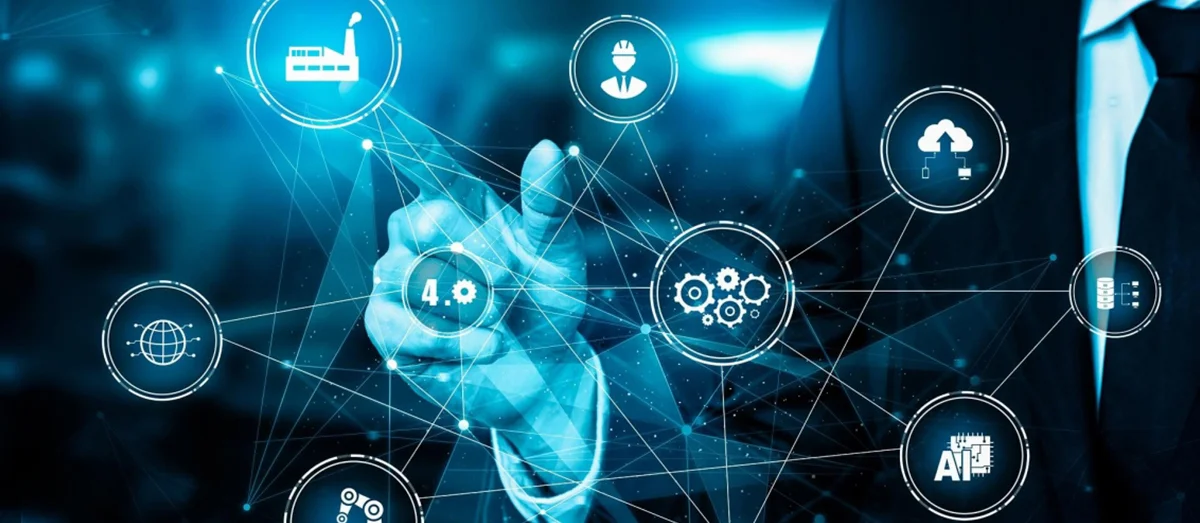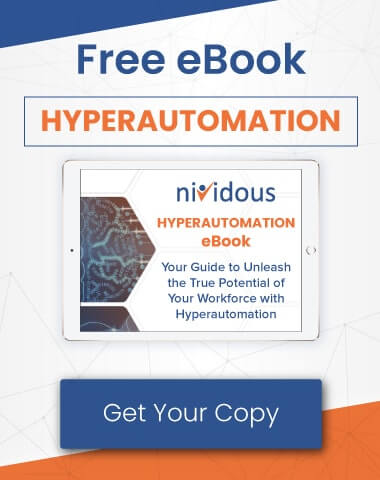As per Gartner, “Over the next 10 years and beyond, supply chains will become more autonomous.” By then, hyperautomation, a key enabler of this transformation, will be pervasive in all aspects of the supply chain helping companies to unleash trapped talent from non-value-added tasks. The autonomous supply chain of the future will benefit from the freed-up resources focused on redefining supply chain strategy, driving innovation, taking care of customer experience, and controlling AI decisions.
Hyperautomation, the combination of advanced automation technologies, facilitates or automates tasks that originally required some form of human action or judgment. It is rather an approach to address automation projects more holistically. Robotic Process Automation (RPA), Artificial Intelligence (AI), Machine Learning (ML), and other types of decision and task automation tools are combined to achieve end-to-end process automation while effectively orchestrating work between humans and Bots.
Transactional supply chain processes, for example order to cash, and complex decision making for example supply chain planning, are among the most frequently discussed use cases for hyperautomation to be used in the supply chain.
According to Gartner, “CSCOs must start setting up a multiyear strategy now to adopt hyperautomation in order to realize an autonomous supply chain over the next decade and beyond.”
| Based on Gartner’s recent interview, “The consensus among the interviewees is that hyperautomation will eventually augment humans’ decision-making capabilities and support the creation of an autonomous supply chain. Such a supply chain of the future will be able to automatically plan in real time and run automated operational actions in a frequent, granular, and cost-effective way.”
[Source: Supply Chain Executive Report: Pursuing an Autonomous Supply Chain With Hyperautomation, Pierfrancesco Manenti, 22 February 2021] |
Gartner, in this recent report, lays out a three-stage approach to help the CSCO and supply chain heads of strategy plan their future-state, digital supply chain.
1. Automation
Companies have made substantial investments in industrial automation and robotics to streamline their physical operations, but processes that are transactional and decision-driven can be further automated with the use of automation technologies. Gartner estimates that more than 70% of commercial enterprises have dozens of hyperautomation initiatives underway. As RPA is experiencing mainstream adoption with its maturity, in the next five years, supply chain leaders are expected to roll out RPA initiatives that are more coordinated and impactful to the business.
2. Augmented Intelligence
When AI is used to enhance cognitive performance, including learning and decision making, it is referred to as ‘Augmented Intelligence’. It is a human-centered partnership model of AI and people working together. Technologies that are in their early stage today will reach the plateau of productivity, making hyperautomation capable of automating more complex tasks with enhanced intelligence. Tasks that required human judgments such as supply chain planning will be automated using hyperautomation technologies allowing leaders to make speedy decisions. ‘Augmented Intelligence’ is the next step of automation where the workforce will control and orchestrate the automated supply chain, while AI-driven technologies will do the heaviest lifting.
3. Autonomy
This is the stage where AI will attain its maturity with ‘Human Augmentation’; minimal direct human intervention will be needed from a traditional work perspective. As per Gartner, “All of the supply chain leaders we interviewed agree that, sometime beyond 2030, a large majority of their supply chain activities will most likely become fully autonomous and self-healing. However, they don’t expect a lights-off supply chain, with no people at all. They all agree that hyperautomation is the opportunity to free up people’s time for the value-added work that only humans can perform.” The humans will be employed to work on more value-added, strategic, and decision-driven tasks.
As the development of automation technologies is very fast, the supply chain leaders are advised to start evaluating suitable technologies to build an autonomous supply chain now, so that they are prepared as these technologies mature.
Gartner has also suggested a few recommendations to help leaders make the shift more responsibly.
- “CSCOs must create a multiyear, integrated digital supply chain strategy and roadmap to experiment, pilot and roll out hyperautomation.
- CSCOs should extend existing mechanisms — like data governance and risk management — to AI. Favor diversity, not just in terms of people’s minds, backgrounds, and cultures, but also in terms of data selection and algorithm choices.
- To cope with uncertainties, CSCOs must undertake a fundamental change to their supply chain planning, adopting what Gartner calls resilient planning. With resilient planning, multiple scenarios will be created at the same time to model uncertainty.
- The speed at which CSCOs will be able to refresh their knowledge stocks will be a critical success factor.
- Attract and hire digitally native Generation Z. When hired, leaders should provide a platform for them to innovate, giving them exposure to the business and encouraging them to drive older generations’ digital dexterity.
- As technology becomes more autonomous from human interaction, leaders will have to rethink the supply chain organizational structure and the role of people.
Are looking to automate your supply chain operations?
Nividous can help. Request a free demo, customized for your industry.




![The Path Forward for Intelligent Automation [2024 Trends] Blog Feature](https://nividous.com/wp-content/uploads/2024/05/The-Path-Forward-for-Intelligent-Automation-blog-feature-1.webp)
